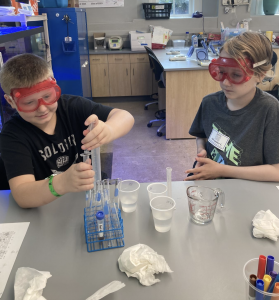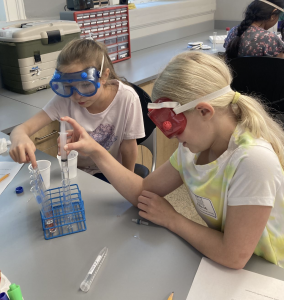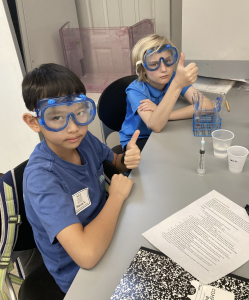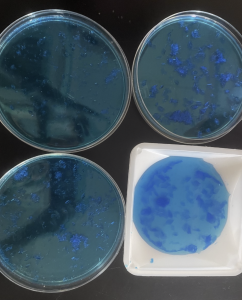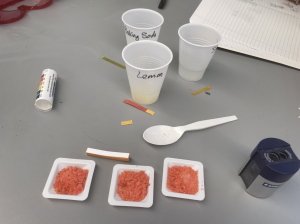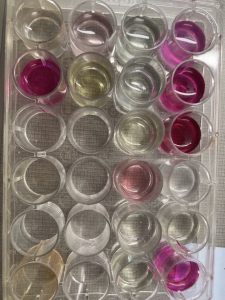Summer SAVY 2022/Session 5 – Common and Practical Chemistry for Rising 5th/6th Grade
Friday: Hi all,
Thursday: Hi all,
Wednesday: Today we have an experiment-packed day in chemistry. We started the day with a crystallization lab. Each group made a solution with a different amount of copper II sulfate and we let it crystallize all day. At the end of the day we examined The crystals that had formed and will look again tomorrow morning. After crystallization, we talked about acids, bases and pH. We learned that we all had acid breath because we can change a solution from a base to neutral just by blowing air into the solution with a straw. Campers tested a bunch of solutions using a variety of pH testing reagents. Finally lab groups tested a variety of solutions to see which one caused the most fizz in a sample of pop rocks. The results were split and might require further testing. Today was a lot of fun for me and I can’t wait to see everybody tomorrow.
Tuesday: Hi Y’all!
Today in Common and Practical Chemistry we started the day by using chromatography to separate the red and blue dyes in grape Kool-Aid. It turns out the more polar 5% alcohol dissolves the red dye and the less polar 25% alcohol dissolves the blue dye. Then we talked about atoms and ions and learned how to differentiate between ionic and covalent compounds. After lunch, campers observed how sugar, a covalent compound, caramelizes and then completely decomposes when put over a flame while salt, an ionic compound, is completely unchanged by the heat of an alcohol flame. We then learned about electrolytes and tested salt water, sugar water, distilled water and a variety of drinks to see if they were electrolytes and conducted electricity. Finally, we talked about hydrates and observed the brilliant blue color of a hydrate disappear when heated and reappear when water is added. I can’t wait to do more chemistry tomorrow!
Dr. Neelie Crooke
Monday: Today has been a busy day! We started the day getting to know each other and the rules of the lab. Did I mention that we get to meet in a high school lab classroom? Then we started talking about atoms, compounds, and the polarity of molecules. Campers learned that opposite charges attract and that polar and nonpolar liquids like oil and water don’t mix. We then performed an experiment using honey, dry mustard, and tomato paste as emulsifiers to get oil and vinegar to mix and learned that mustard is the best emulsifier. Our emulsions were left on the bench while we went to lunch and the mustard emulsion still had not separated. After lunch we stayed in the lunch area and learned about percent solution by doing a lemonade lab. Each group chose 5 concentrations of lemonade to make. They weighed out the lemonade mix using an electric balance and then added water to make their solutions. After stirring, they tried their creations. The label on the container suggested a concentration of 7% lemonade mix in water. The most popular concentration was 10% with a few brave souls who tested and preferred a concentration of 50% lemonade mix (I don’t think it even all dissolved!) Overall, I think we had a fun and full day and I can’t wait to do more chemistry tomorrow.
